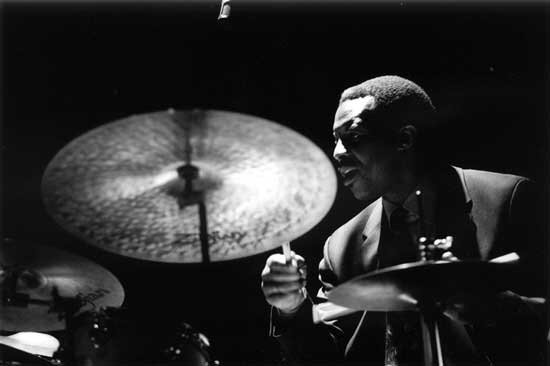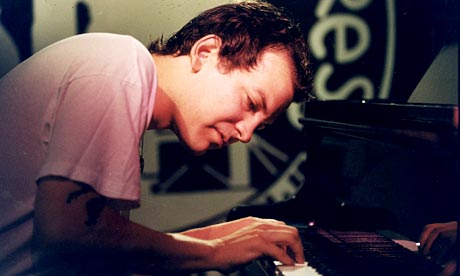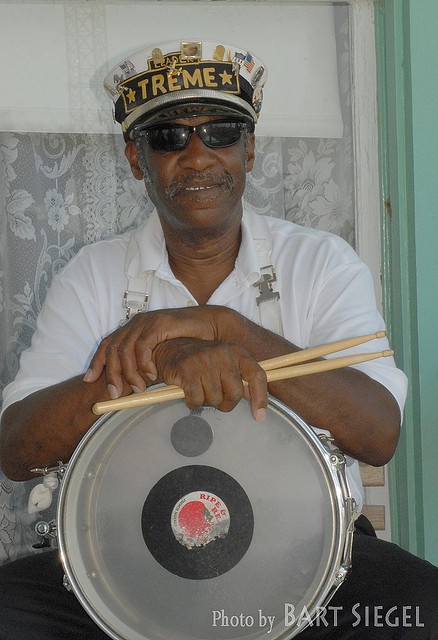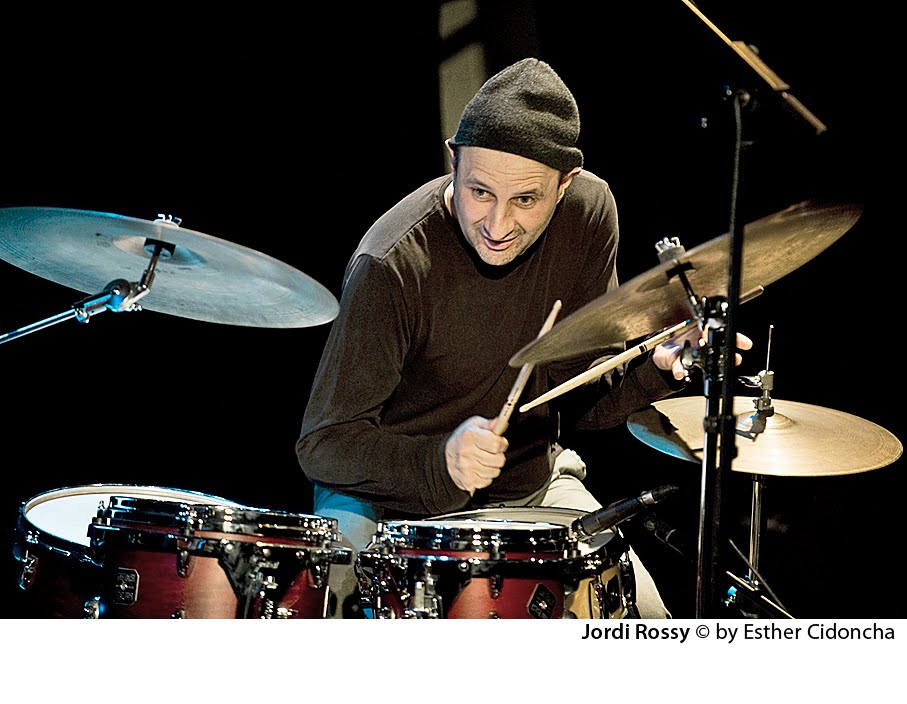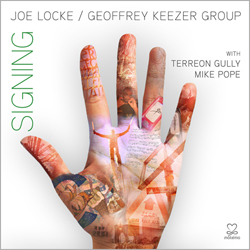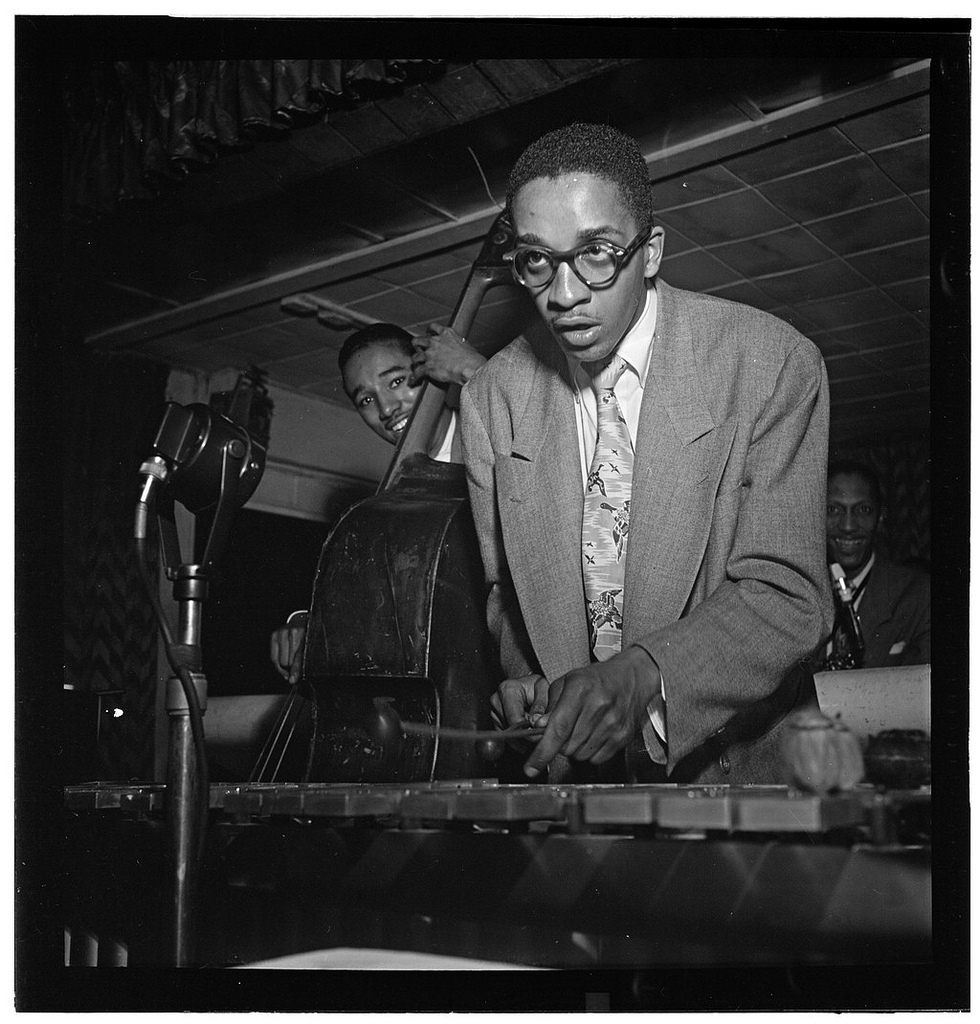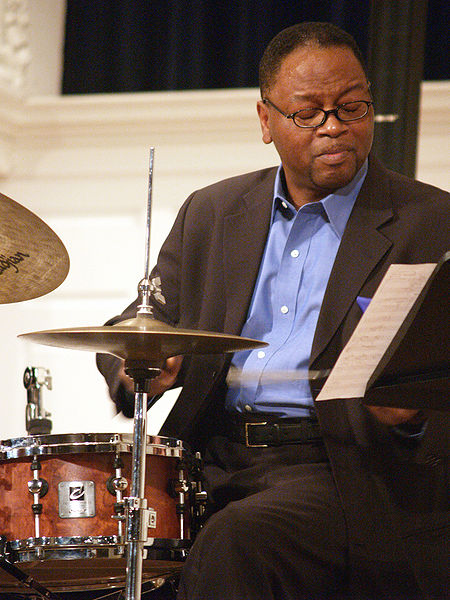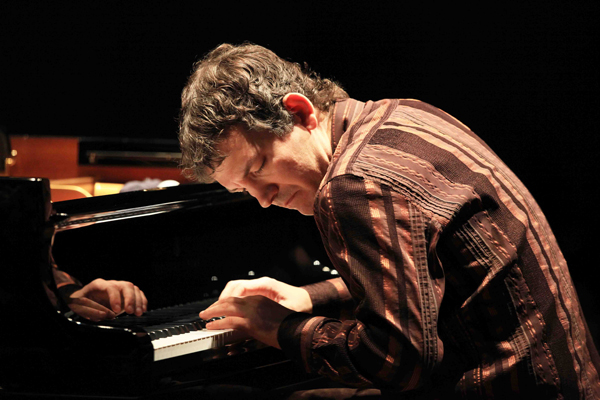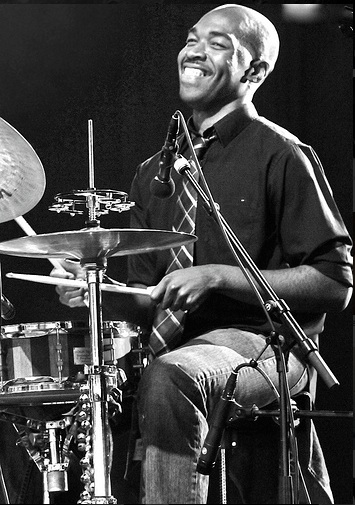Download the Transcription: Drums
Watch a video of the solo being performed by Derek! — http://www.youtube.com/watch?
The transcription features Herlin Riley’s playing on “Evidence” from Wynton Marsalis Septet’s 1999 multi-disc release Live at the Village Vanguard. Monk’s writing, exemplified in “Evidence” is rhythmically unique, often jagged and deceptive, a quality which gives drummers many possibilities. Herlin’s choices are tasteful, organic and exploit the rhythmic opportunities Monk provides. Herlin plays with triplet vs. sixteenth and straight vs. swing ideas, and moves in and out of downbeat and offbeat oriented phrasing. All of which reflect the similar off-kilter effect the tune’s melody has. Also, notice the two busiest portions of the solo, (m.49-56 and m.73-76). The first example phrases triplets, with the latter phrasing sixteenths, demonstrating smart soloistic flow and development. With its phrasing, and creative rhythmic ideas, this transcription stands out as a fun and excellent example of musical drumming.
